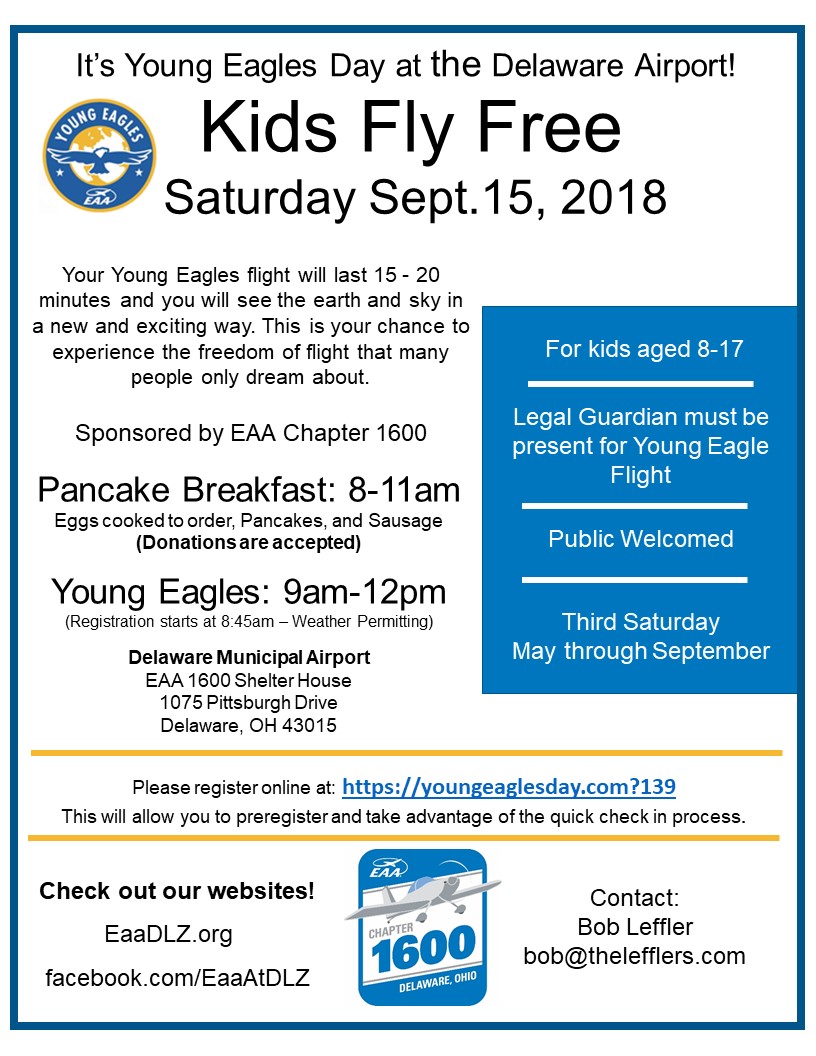
No matter what aviation means to you, this is your year-round home for aviation! Read more . .
Founded in 1992, the Young Eagles program provides youths ages 8–17 with their first free ride in an airplane. Read more . .
 Pancake Breakfasts
Pancake BreakfastsDuring the summer months, chapter 1600 hosts a Saturday morning pancake breakfast. Read more . .
The chapter holds an evening meeting with presentations, talks or demonstrations. Read more . .
Many congratulations to Jason Seavolt and to Joe Strausbaugh who won a Bronze Lindy award at Oshkosh last week for Jason's magnificent RV8!
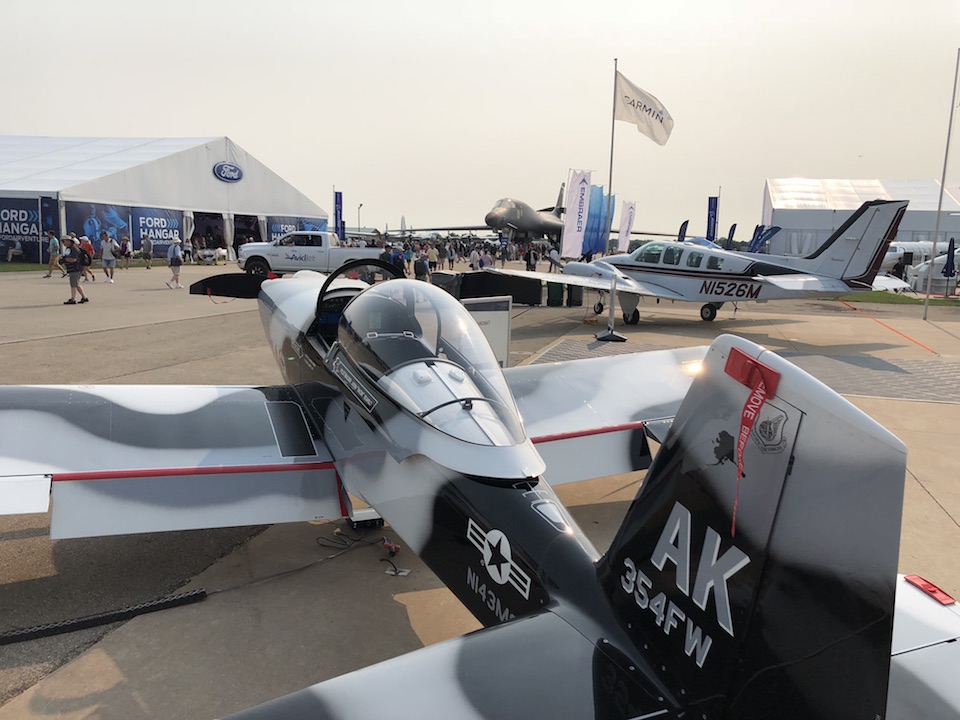

Hello group. As a follow up to our live Facebook broadcast, I would like to thank everyone who supported our raffle for the 5 tickets to ride the Tri-Motor. Our winners, as announced on the video, are: Sue Heston, Ron Hedges, Ryan Sundberg, Marvin McIntire, and Chuck Brant. Congrats again to you five. You will be contacted soon to arrange for the pickup of your tickets. We look forward to seeing you and many others at our Tri-Motor event August 9-12 at the Delaware Municipal Airport.
Thanks again!
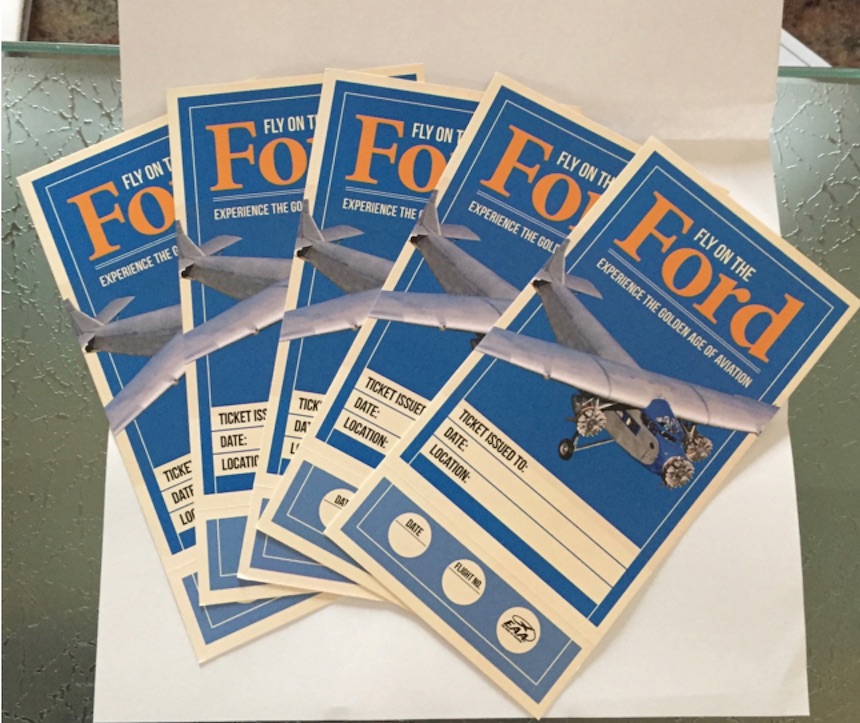
Despite horrible weather and air traffic congestion like you wouldn't believe, Jason Seavolt made it to Airventure on Saturday evening.
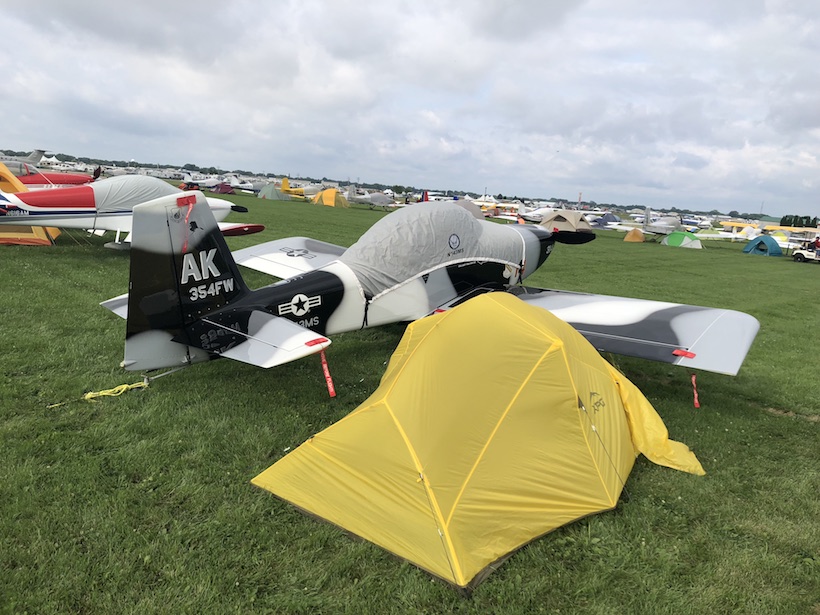
This is time for all of us to be proud of our group. We are bringing this historic plane to our airport in the City of Delaware. It is shaping up to be a great event. We have a banner hung at the airport (see below), a hanger to park in, a pilot, and food trucks lined up to make this a fun event for all. We are also going to showcase the 2 flight schools on the field - fixed Wing and Rotorcraft.
Here is a copy of the schedule as it stands.
Tri-Motor Schedule for Delaware Municipal Airport:
Schedule:
Date Hours of Operation Side Activities
Aug 8 Tri-Motor Arrives time TBD Cook out in Shelter House for Crew and Volunteers
FLIGHTS – Non-Stop KDLZ to KDLZ
Aug 9 2pm – 5pm Media flight 2:00pm
Aug 10 9am – 5pm Taquitos – Food Truck
Airport Open House and Fly-In*
Aug 11 9am – 5pm My Little Kitchen – Food Truck
Aug 12 9am – 5pm Jimmy G’s Barbeque – Food Truck
Aug 13 Tri-Motor Departs for next tour stop
* Fly- In of other groups or General Aviation pilots – Hopefully!
We can use our help to make this a safe and successful event for all. I’m still looking for people to help out. Let me know if can contribute your time to any of the days. If you have contacts to fly in groups, please reach out and invite them to the Saturday and Sunday Fly-In. Could also use help with coordinating parking.
Thanks and hope to see you there.

Hi Bernie,
It was a pleasure meeting you at the Young Eagles event. Christina had an uplifting experience on her ride along. :) I would like to share the pictures I took that day. Some are good some aren't. Feel free to share or do whatever you want with these pictures.
I'd also like to thank you and the many other Volunteers. A Volunteer gives something that can not be returned, their time. Not only did you and your crew give of their time, they shared their passion for aviation, their knowledge, their fuel, and their aircraft / equipment. I appreciated the day, Christina appreciated the day, and I know many others did by the smiles plastered on each of their faces.
Thank you, Jeff Johnson
It's time to get some serious planning put together. The Tri-Motor will be here before we know it. Volunteers Are Needed. If you just want to find out more about what's being planned, or want to take part in the festivities - Please Come! Volunteer roles and times needed, will be discussed.
When : Wednesday, June 20, 2018 - 6:30PM &
Saturday, June 23, 2018 - 10:00 AM
Meeting will be at the Shelter House (Pancake area) - weather permitting - or in the Terminal. You only need to come to one of the meetings.
Help make this a safe, exciting, and successful event for the City, the Airport, and EAA Chapter 1600.
Thank you!
Bernie Rifkin
How about the Southern tip of South Africa to Oshkosh in a vintage, Warner Scarab powered Fairchild 24? What a trip!
Click this link to read the report of the trip. It's a long report, but well worth the read.
http://www.warnerenginecompany.com/VWO%20to%20Oshkosh.pdf
This Saturday will kick off this year's pancake breakfasts; third Saturdays May thru September. Thanks to all of you that helped with last year's breakfasts and I hope to see you back again this year. Any and all help will be appreciated. This year we are going to keep the kitchen open for breakfast until 1100 to support the Young Eagles program which will operate until noon. Our thinking is that we can serve a few of the YE parents that are scheduled for a later flight.
The shelter house has been cleaned and restocked. Since I have made a break down the estimated cost per serving which we will be able to compare this to our donations following each event to see how we're doing. Additionally, we are going to offer cold bottled water for a dollar donation during the YE flights.
Please give me a call if you can volunteer some time to help with the breakfasts,
Lynn
As in previous years there will be a chapter fly-in and young eagles event on the third Saturday of each summer month. You can find details of each event in the "Events" page along with many other events around the area. Check that page regularly!
May 19, 2018 – Delaware Airport
June 16, 2018– Delaware Airport
July 21, 2018– Delaware Airport
August 18, 2018– Delaware Airport
September 15, 2018– Delaware Airport
October 14 2018 – My Place Airport, near Cardington
Reminder Reminder!!
Wednesday May 9,2018 7:00 PM
Delaware Community Center YMCA
1121 S Houk Rd, Delaware, OH 43015
Join us as Don Peters, Retired TWA Pilot, and Jim Thompson share some of the history that surrounds the very Ford Tri-Motor that will be visiting Delaware August 9-12, 2018. We will also learn about the restoration efforts underway at Port Columbus.
Modern airliners can receive the ATIS by radio, or by a printer typically in the center console. This is the ATIS at Paris DeGaulle from last Sunday. I received it from a friend who flies for a major US carrier.

EAA gratefully acknowledges the support of Aircraft Spruce and Specialty Co. for their generous sponsorship of EAA webinars.
Registration is required, and space is limited.
|
Date |
Time |
Title |
Presenter(s) |
||
|
4/3/18 |
7 p.m. CDT |
Patti Arthur |
|||
|
|||||
|
4/4/18 |
8 p.m. CDT |
Differential Diagnosis |
Mike Busch |
||
|
|||||
|
4/11/18 |
7 p.m. CDT |
Aviation Weather Center Operations and Products |
Declan Cannon |
||
|
|||||
|
4/17/18 |
7 p.m. CDT |
Jim Bourke |
|||
|
|||||
|
4/25/18 |
7 p.m. CDT |
Flying with Aerovie EFB |
Bryan Heitman |
||
|
|||||
|
5/2/18 |
8 p.m. CDT |
Where Fuel Meets Air |
Mike Busch |
||
|
|||||
|
5/9/18 |
7 p.m. CDT |
Four Fundamentals of Flight – Breaking it Down to Basics |
Prof. H. Paul Shuch |
||
|
|||||
|
5/23/18 |
7 p.m. CDT |
TFR and ADIZ: How to Avoid a Fighter Escort |
Douglas Dal Soglio |
||
|
|||||
|
5/30/18 |
7 p.m. CDT |
Developing the Next Generation of Online Aviation Weather Forecasts |
Jamie Enderlen and Brian Hirsch |
||
|
|||||
|
6/6/18 |
8 p.m. CDT |
Planes and Cars |
Mike Busch |
||
|
|||||
 |
As nice as basic med is, for people that don't have a regular family doctor it may not be that easy. A physician that has no knowledge of your history and no knowledge of aviation may not be too keen to help.
Luckily we have a number of physicians in our EAA chapter and one of them, Dr. David Hill who practices emergency medicine in the Columbus area may be able to help. You can email David at This email address is being protected from spambots. You need JavaScript enabled to view it. |
Meeting is a combined business, presentation and planning meeting: Investing Time in the Chapter
If you have an interest in Aviation, Young Eagles, or the Tri-Motor, please show up and get involved.
Thanks
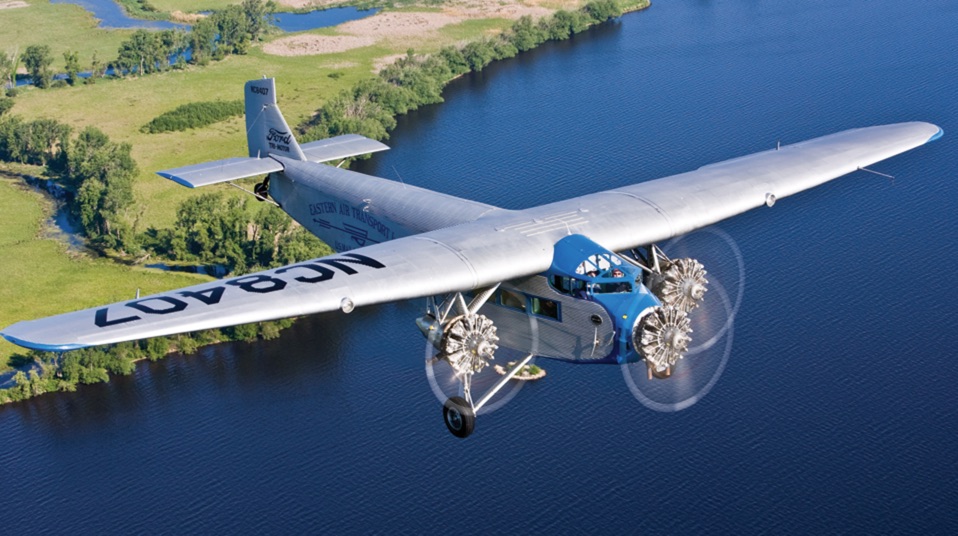
This beautifully restored Ford "Tri-motor" will fly over Columbus again in August of 2018. See below to book your seat!
Recall the energy, passion, and excitement of the Roaring ’20s by flying aboard the Ford Tri-Motor. Known as the first luxury airliner, the Ford Tri-Motor redefined world travel and marked the beginning of commercial flight.
All ticket proceeds support the Experimental Aircraft Association, a non-profit organization dedicated to sharing The Spirit of Aviation with everyone. THis magnificent aircraft will be at the Delaware Ohio airport between [dates] offering a chance to ride in a piece of living history so much a part of central Ohio.
We invite families to visit and learn all about our aircraft and our organization. Viewing the aircraft is free, so be sure to bring your camera along.
To reserve you seat on the Ford Tri-motor tour, click one of the links below
Book Aug 09 Book Aug 10 Book Aug 11 Book Aug 12
Henry Ford mobilized millions of Americans and created a new market with his Model T “Tin Lizzie” automobile from 1909 to 1926. After World War I, he recognized the potential for mass air transportation. Dutchman Anthony Fokker had designed a range of aircraft that were just starting to find a use in passenger carrying, including a "Tri-motor" with three engines. Fokker's aircraft were built of wood, however, and a number of structural failures made people less than enthusiastic about travel by Fokker. William Bushnell Stout thought he could do better. Borrowing heavily from prof. Hugo Junkers' use of corrugated metal in aircraft construction, but retaining the basic shape and layout of the Fokker, the appropriately named Stout designed a family of all-metal transport aircraft.
In the early 1920s, Henry Ford, along with a group of 19 other investors including his son Edsel, invested in the Stout Metal Airplane Company. Stout, a bold and imaginative salesman, sent a mimeographed form letter to leading manufacturers, blithely asking for $1,000 and adding: "For your one thousand dollars you will get one definite promise: You will never get your money back." Stout raised $20,000, including $1,000 each from Edsel and Henry Ford. For later bought out Bill Stout and the aircraft became known as Fords.
Ford’s Tri-Motor aircraft, nicknamed the “Tin Goose,” was designed to build another new market: airline travel. To overcome concerns of engine reliability, Ford specified three engines and added features for passenger comfort, such as an enclosed cabin. The first three Tri-Motors built seated the pilot in an open cockpit, as many pilots doubted a plane could be flown without the direct “feel of the wind.”
From 1926 through 1933, Ford Motor Company built 199 Tri-Motors. EAA’s model 4-AT-E was the 146th off Ford’s innovative assembly line — the 76th model 4-AT-E — and first flew on August 21, 1929. Days later, it was sold to Pitcairn Aviation. When Pitcairn’s management changed hands later that year, NC8407 became the first airplane belonging to Eastern Air Transport, whose paint scheme is replicated on EAA’s Tri-Motor. Eastern Air Transport later became Eastern Airlines.
After a checkered history in Latin America, and later working for a variety of crop spraying businesses, EAA’s Tri-Motor moved to Lawrence, Kansas, in 1964, where its new owner flew barnstorming tours. During this period, it had a variety of roles, including serving as the primary setting for the Jerry Lewis comedy, "The Family Jewels."
In 1973, the aircraft was still being used for air show rides, including an EAA chapter’s fly-in at Burlington, Wisconsin. While at the 1973 fly-in, a severe thunderstorm ripped the plane from its tiedowns, lifted it 20 feet into the air, and smashed it to the ground on its back. EAA subsequently purchased the wreckage.
After an arduous, 12-year restoration process by EAA staff, volunteers, and Ford Tri-Motor operators nationwide, the old Tri-Motor took to the air once again, having its official re-debut at the 1985 EAA Fly-In Convention in Oshkosh.

On July 7, 1929 transcontinental trips began in the United States. Transcontinental Air Transport Inc (TAT) initially offered a 51-hour train/plane trip from Penn station, New York to Los Angeles. The fare for the trip was $338 each way - about the same as it is today. In 1929 $338 was equivalent to about $4,800 today though. TAT eventually became TWA, which in turn was acquired by American Airlines.
In 1929 no one was keen to fly at night or over mountains, so for those parts of the trip passengers boarded a train. The Pennsylvania Railroad provided sleeper service leaving New York in the late afternoon and arriving at Columbus early the next morning. At the Port Columbus airport a new TAT terminal was constructed and it still stands on the southern edge of the airport. Thousands of travelers see it every day. Few realize what a part it played in the history of the Nation's airline system.
At Port Columbus International Airport passengers boarded a Ford Trimotor aircraft that (if all went well) stopped in Indianapolis, St. Louis, Kansas City, Wichita, and finally Waynoka, Oklahoma. There, passengers caught the Santa Fe Railway for an overnight trip to Clovis, New Mexico, where they would take a second Ford Tri-motor flight to Albuquerque, Winslow, Az., Los Angeles, or San Francisco.
TAT's slogan was "Harnessing the Plane and the Iron Horse." Cynics referred to it as "Take A Train" since bad weather and other factors often meant that the whole trip had to be spent in a railway carriage.
David Perdzock spends more time at DLZ than most people. He has been working steadily towards the completion of his RV 9A, which he started in November of 2015. David has a great website that he uses to document his build.
Head over to http://davidomalia.com/ or click on the image below to see it.
Let's hope this never happens here:

In a new and unexpected initiative the European Aviation Safety Agency has drafted a new rule that would mean flight time on Annex II aircraft (vintage aircraft, out-of-production types with no manufacturer support, and homebuilts) will not be credited for the purpose of issue, revalidation or renewal of an EASA license, rating or certificate.
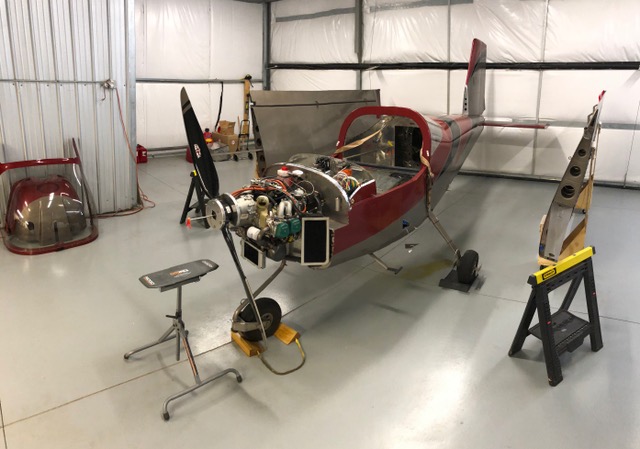
N76012 is in the middle of her 2nd condition inspection. The usual suspects (family life, work) have prevented me from moving very quickly, so this is taking about 6 to 8 weeks.
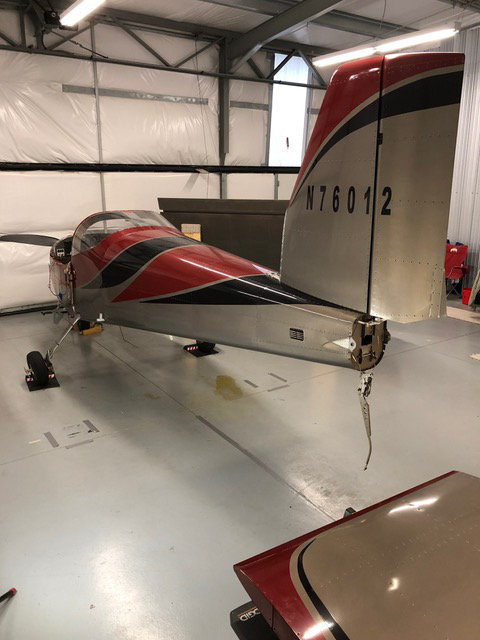
Just as I thought I was finishing up, Van’s released two Service Bulletins regarding cracks in the horizontal stabilator box spar and in the anti-servo tab. Parts will not be available for about 10-14 days, and then it looks like about 6-8 hours to install the new parts and re-attach the tail feathers. All in all, a routine annual that will leave my bird ready to fly and have fun when the weather warms up!
-dbh
------------------------------------
David Hill, CFI-I
KDLZ, Delaware, OH
N7623V C-177RG
N76012 RV-12
This email address is being protected from spambots. You need JavaScript enabled to view it.
EAA HQ have confirmed that we will be hosting a Ford Tri-Motor event at Delaware later this year. The chapter will meet shortly to determine the exact date from the list provided by EAA.
Bückers we built with flat, faceted windshields and with smaller curved windshields. Mine has he flat style. After I long search I finally found a set of the original curved style in a museum in Switzerland. I think they will look nicer and perhaps cause less buffeting.
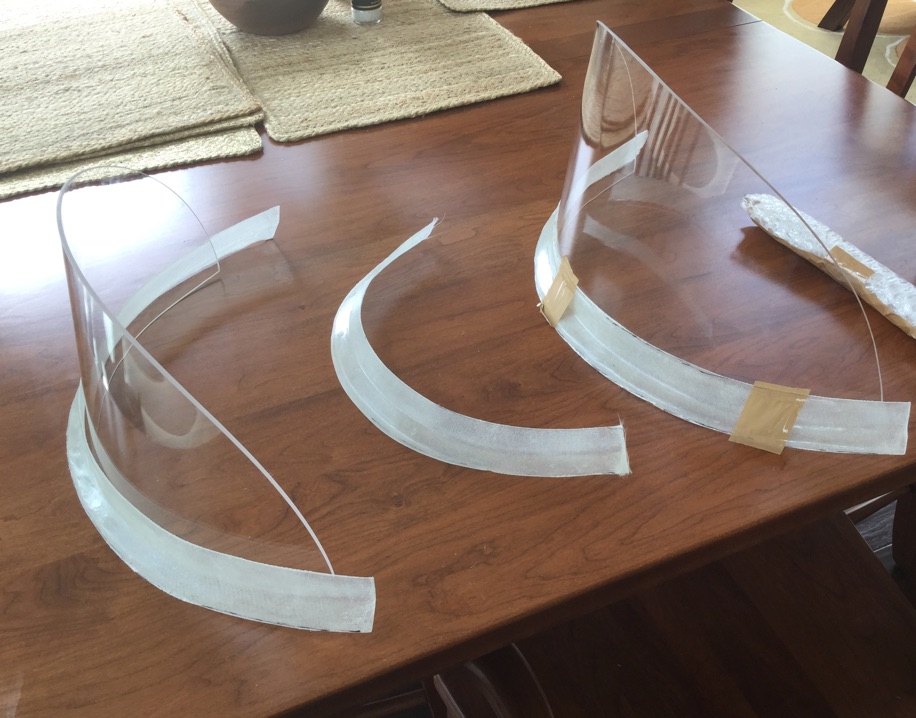
These will be going on as soon as the weather is warm enough to risk working with plexiglass.
The next EAA Chapter 1600 Meeting will be at on February 14 at the Delaware YMCA. Same place as last month.
We will have a business meeting at 6:30 PM, then at 7:00 PM yours truly will be doing a presentation on EAB Condition Inspections.
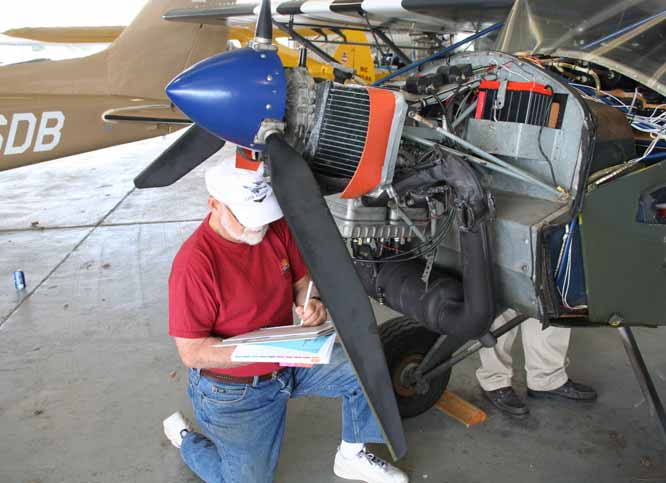
I hope to have a really HUGE turnout!
George
This fascinating video highlights a group of friends who travel from their club in Finland to the northernmost city in Sweden each year for a flying camp. They carve a runway from the surface of a frozen lake, and with canopies of double-layered plexiglass to prevent them freezing over, fly in temperatures of minus 50 degrees Celsius! Well worth a watch.
1ST GEN RV-12 FUSELAGE KIT • PRICED TO SELL • FULLY ASSEMBLED The wiring harnesses is 98% complete, primed interior with AKZO, installed LEMO headset connector for Bose powered headset, and audio jack for a camera. Asking $3,500. This is a great deal! I am a A&P and work for a 121 Airline as a inspector, so I take great pride on getting everything right. rolick22 at g mail • Contact David Rohrlick, Owner - located Powell, OH USA • Telephone: 6142561498 . • Posted January 24, 2018 • Show all Ads posted by this Advertiser • Recommend This Ad to a Friend • Email Advertiser • Save to Watchlist • Report This Ad • View Larger Pictures
![]()
 |
 |
 |
Select Number:
GL0780101
Description:
This presentation describes ADS-B and offers a decision tree to help walk through the growing number of options.
1.Goal of the presentation – Decision tree
2.What is ADS-B? 1.Where is ADS-B-Out required?
3.Why equip now?
4.What services come with ADS-B-In? 1.ADS-B-In FIS-B data update rates and altitudes
5.Equipment choice overview, Including estimated cost 1.References to the full presentation at the web site offering details about many products
6.Selection decision tree
7.Additional resources
Jason Seavolt's superb RV8 recently arrived home from a trip to the paint shop in Alabama. Wow!
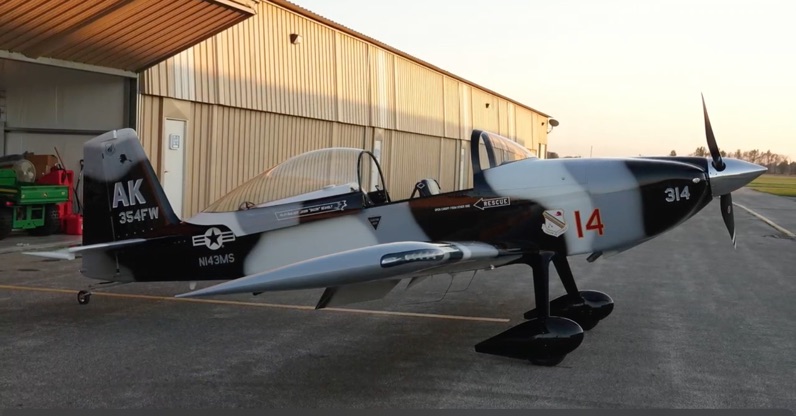
Our next chapter meeting/presentation will be held at Airspace Place on Wednesday, Nov 8th at 6:30 PM. This time, local RV-10 builder/pilot, and IMC club member Bob Leffler will give a presentation on designing and installing a modern, IFR capable instrument panel.
There have been one or two changes in instrument flying technology since the Martin Mars was designed. Bob will explain all.

FAA Safety Team | Safer Skies Through Education A scheduled seminar meeting your notification preferences has had some changes. Below is a brief description of the modified seminar:
"See Revised Meeting Date / Pilot Essentials - The Lost Episode"
Topic: Weather Briefings
On Wednesday October 11, 2017 at 18:30 Eastern Daylight Time
Location:
Delaware Airport - Airspace Place Condo Hangar Meeting Room
1075 Pittsburgh Dr.
Airspace Place Condo Hangar
Delaware, OH 43015
Description:
Come to this Wings event and hear from "State Tower" Air Traffic Manager Deral Carson on four subjects--the ones we all want to ask about but tend to dismiss.
- Pilot/Controller Communication: Less hearsay; more facts. There's lots of myths and mysteries floating around about pilot/controller communication. This section will arm pilots with exactly what the rules say
- Working with ATC: Every pilot wants to be successful working in and out of control towered airports. This short section will help pilots be just that--successful.
- Pilot Weather Briefings: Old school or new method? Both are great, but come learn why old school just might still reign supreme.
- Weather: Finally, we'll look at weather from an ATC point of view. Learn about how ATC can work in concert with pilots. The mix can actually save lives. Come learn how (and there just might be a few good stories).
To view further details and registration information for this seminar, click here.
The FAA Safety Team (FAASTeam) is committed to providing equal access to this meeting/event for all participants. If you need alternative formats or services because of a disability, please communicate your request as soon as possible with the person in the "Contact Information" area of the meeting/event notice. Note that two weeks is usually required to arrange services.
I'm sure everyone has their favorite annual events around the state, but for me the two stand-outs are "My Place" and "SWORFI".
The first event on the calendar takes place on Sunday Oct 1st. It is the South West Ohio Regional Fly In (SWORFI). This fly-in is held at Winemiller farm near Blanchester, on the East side of Cincinnati. Todd Winemiller puts on a great fly-in with many interesting aircraft and great food. The field is 2,700 ft long and extremely smooth.
The airfield is not depicted on the sectional, but you will find it at coordinates N39°12.52' W84°0.75' or N39.207667, W84.019361 (Different GPS use different formats). You can also see it on Google maps here. Todd operates his North American T6 out of the field so it will certainly accommodate most light aircraft. The EAA chapter awards prizes for all kinds of categories.
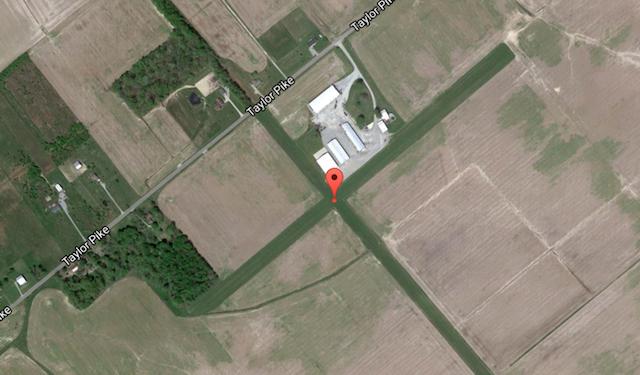
Last year I saw several aircraft I had not seen before and generally had a great time.
The second fly-in coming up is Joe and Lynn's "My Place" fly-in. This one takes place the following weekend: Sunday Oct 8th. Joe and Lynn put on a fantastic event with wonderful food, arts and crafts, a get-together around the farm pond, young Eagles flights, several helicopters and lots, lots more.
The airport details can be found here: http://www.airnav.com/airport/3OH7 The runway is about 2,000 ft by 40 and now that the barn and power lines have been relocated (thank you Joe) the approach is clear.
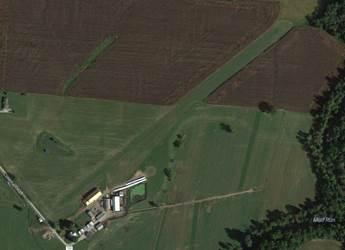
Hope see everyone at both events :)
Chapter 1600 will be having another Cook Out at the shelter house Wednesday, September 20, at 6:00 PM. Hamburgers and hot dogs will be served along with soft drinks and water. Donation will be accepted.
Let’s hope the weather cooperates.
Kevin Piatt
This email address is being protected from spambots. You need JavaScript enabled to view it.
Airport tenants and users,
Friday 9/1 was the pre-construction meeting for the upcoming taxiway (A) mill and pavement overlay project. The project will begin Friday 9/8 with the construction drive and equipment laydown area being establish. Taxiway (A) from the main ramp to runway 10 will be closed Monday morning 9/11 for 30 days. There may be one total runway closure day yet to be determined. When that closure day is decided everyone will be updated immediately.
Per the previous email sent in May, during the time taxiway (A) from the main ramp to runway 10 is closed it will be necessary to back taxi to taxiway (C) when landing runway 28 and back taxi on the runway when departing runway 10. see attachment Also during the closure the only access to and from the runway will be at the main ramp.
Additionally there are several “punch out” items from last year’s project that need to be addressed that will be performed starting the week of 9/11 as well. During this period the section of taxiway (A) from (C) to runway 28 will be closed and taxiway (C) will be the only access to and from the runway and back taxing will be necessary landing or departing runway 10 or runway 28. This section of taxiway (A) will be scheduled to re-open at the end of the day 9/15.
As always these dates are weather dependent and I will keep everyone updated with any pertinent information as it is made available to me.
If you should have any question please contact me directly.
Kevin
This email address is being protected from spambots. You need JavaScript enabled to view it.
The chapter will continue its program of evening membership meetings with the following presentations:
Weather Briefing - Deral Carson, Manager of the OSU Control Tower (working on getting WINGS credit for this one)
EAB – Panel Planning- IFR based upon mission and risk management – Bob Leffler
Off Shore Helicopter Operations – Ken Wood
All meetings at Airspace Place Delaware at KDLZ
1401 Pittsburgh Dr
Delaware, OH 43015
United States
This weekend, Sept 1-3 the Recreational Aviation Foundation is holding an event at Freeman Swank's farm in Butler OH as part of their "2017 RAF Trail". Details are here: http://theraf.org/civicrm/event/info?id=318
Many of us in central Ohio are regulars at Swank field but if this is your first time note that the field is not shown on the sectional, but it is in most databases as "0OH5" (Zero - Oscar - Hotel - Five) Look out for the antennas on the hill to the South of the airport. The field is very smooth and at nearly 3,000' in length should be no problem for most light aircraft.
Swank field, Butler OH
There were some interesting aircraft at MERFI (Urbana) this year. Here are a few that caught my eye.

This is the cockpit of the "New Standard D-25" that was giving passenger rides around the area. What looks like double rudder pedals
are in fact rudder pedals (outer) and brake pedals (inner). There is a lot of aluminum angle in the construction of the a/c. Unusual for
1925.
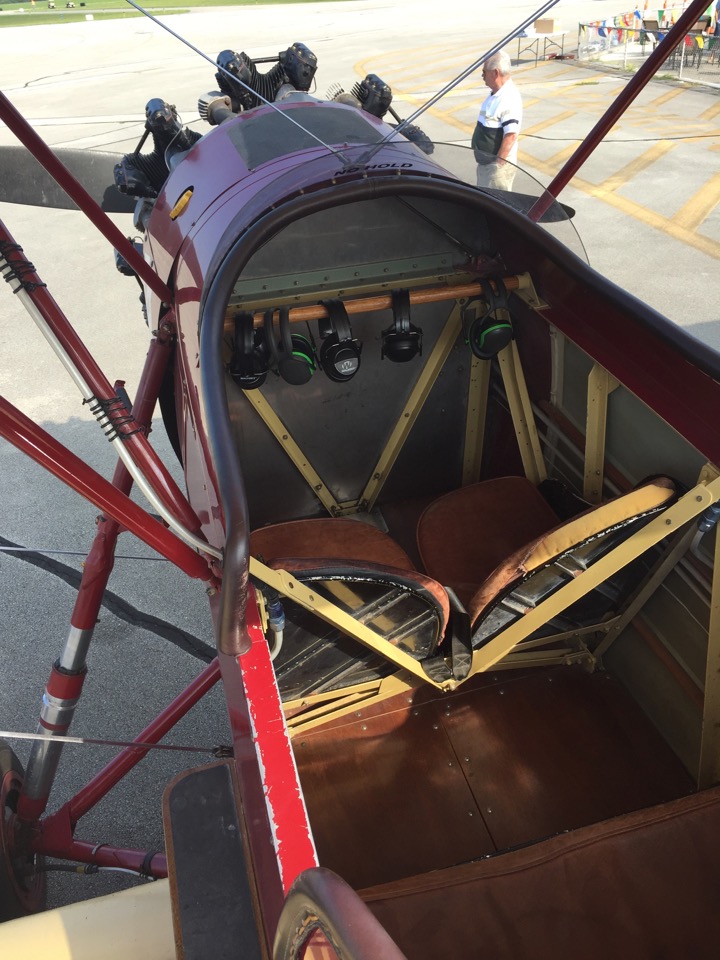
The front cockpit is huge and seats four people in two rows. No wonder the D-25 was so loved by barnstormers. A decent one goes for
$250,000+ these days.
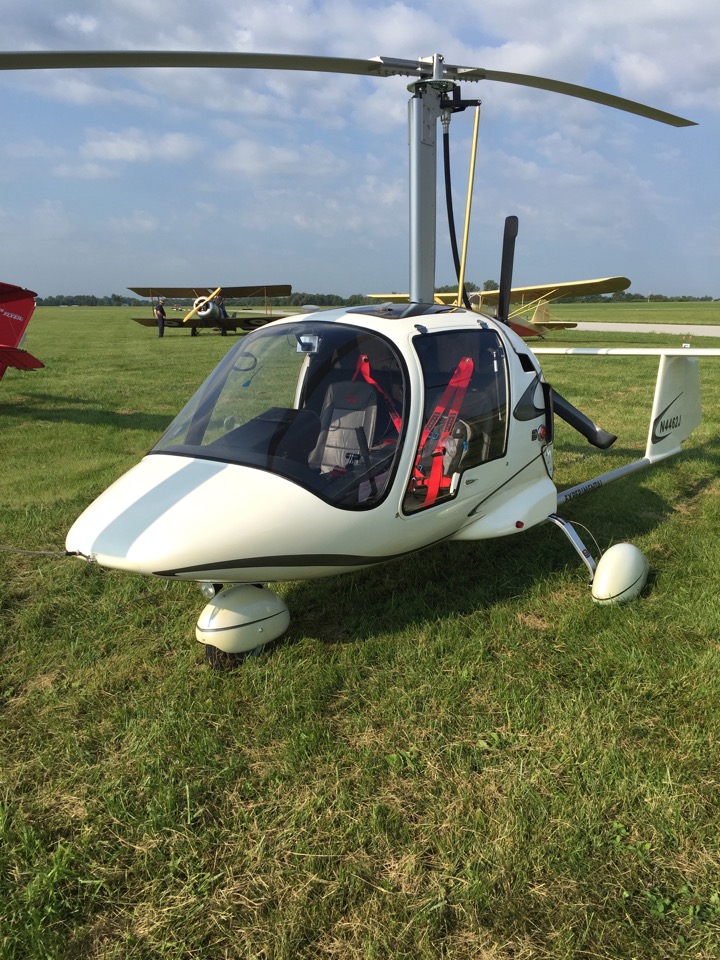
This side-by-side autogyro had a lot of sophisticated technology and was beautifully finished.
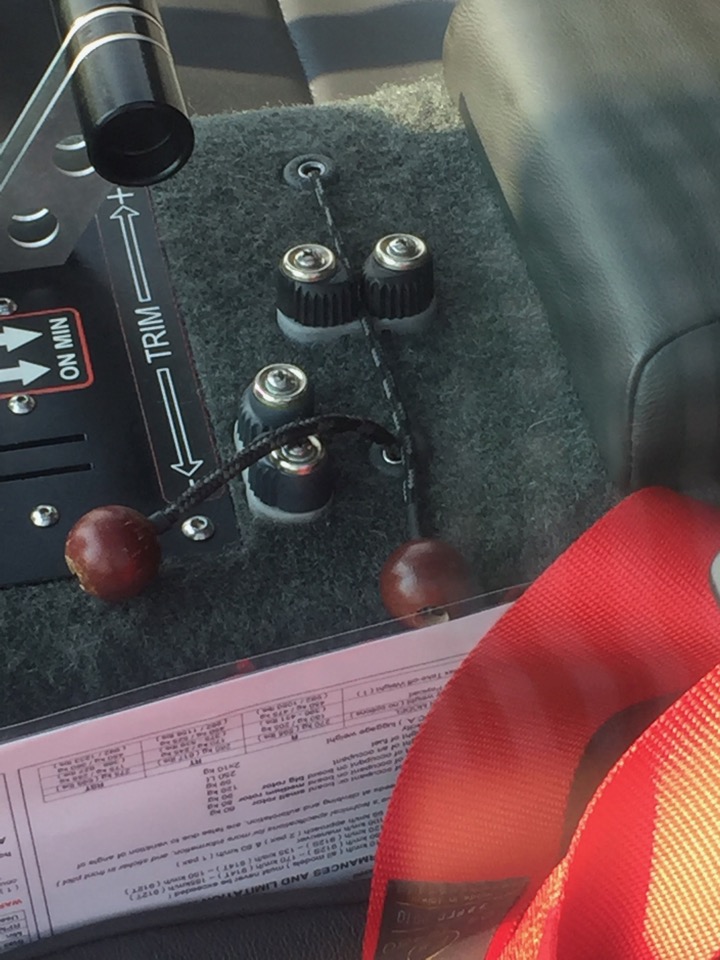
The trim system, however, would be more at home on a sailboat.
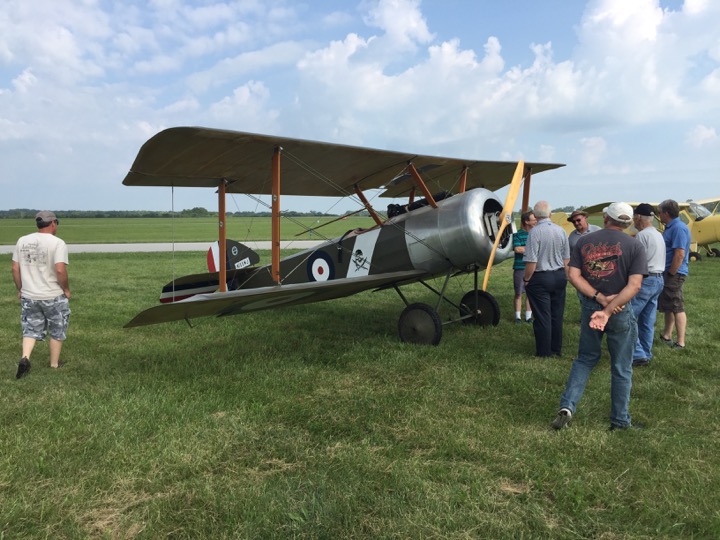
This is a Sopwith Pup replica. It is not one of the Airdrome Aircraft kits though. It was built from original drawings and is quite faithful to the
1916 model. The engine is a VW with a reduction unit It drives an 8ft prop, again like the original.
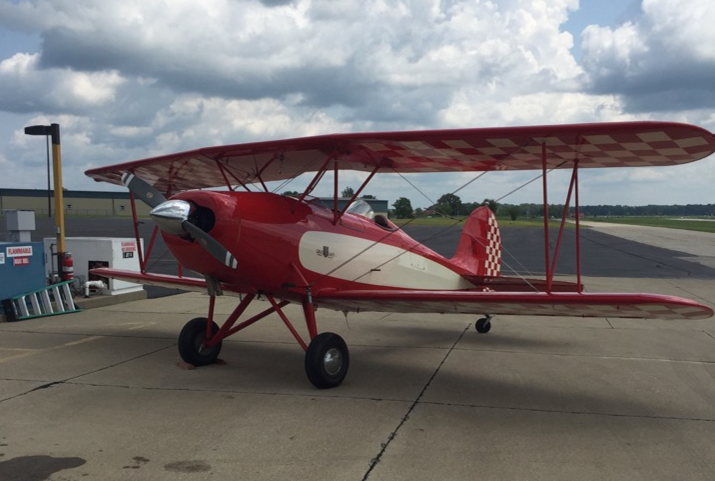
And finally, an absolutely gorgeous Great Lakes. This one is not a 1970s 2T-1A, but a 1930s original. It started life powered by an
in-line Cirrus "high drive" engine, but later received a Lycoming O-360.
The aircraft was restored by Paul Workman of Vintage Aircraft Restoration at the Zanesville/Parr airport.
EAA chapter 9 has organized a tour of the Hartzell Propeller Company. Andy Hale has graciously extended the invitation to all EAA 1600 members. If you are interested in attending, please RSVP to the email address provided in the invitation.
George
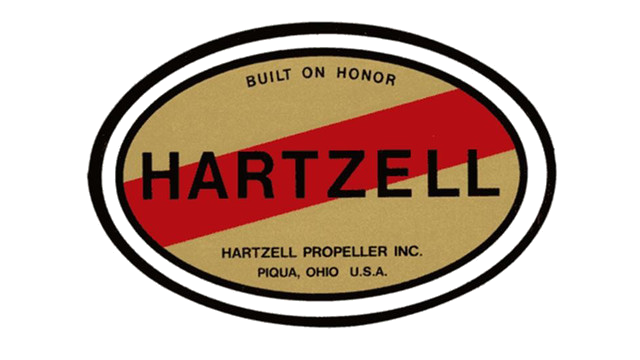
I am pleased to announce that for the August 17th EAA 9 Chapter meeting we will be taking a tour of the Hartzell Propeller Service Center in Piqua, OH. Here are the facts of the tour.
Tour Date: Thursday, August 17, 2017
Tour Time: 7:00 pm
Tour Location:
Hartzell Propeller Inc.
One Propeller Place
Piqua, Ohio 45356
It is approximately one hour thirty minutes drive time without traffic to One Propeller place from KOSU. The Piqua Airport- Hartzell Field Airport (Piqua, OH) I17 is approximately a five minute drive from the Hartzell Service Center at One Propeller Place.
To accommodate the 7:00 pm tour start time at One Propeller Place in Piqua, OH and to get there we can do the following:
Those interested in going should email This email address is being protected from spambots. You need JavaScript enabled to view it. by Thursday August 10, 2017 at 5:00 pm with the following information (I need to report back to Janet at Hartzell how many are coming):
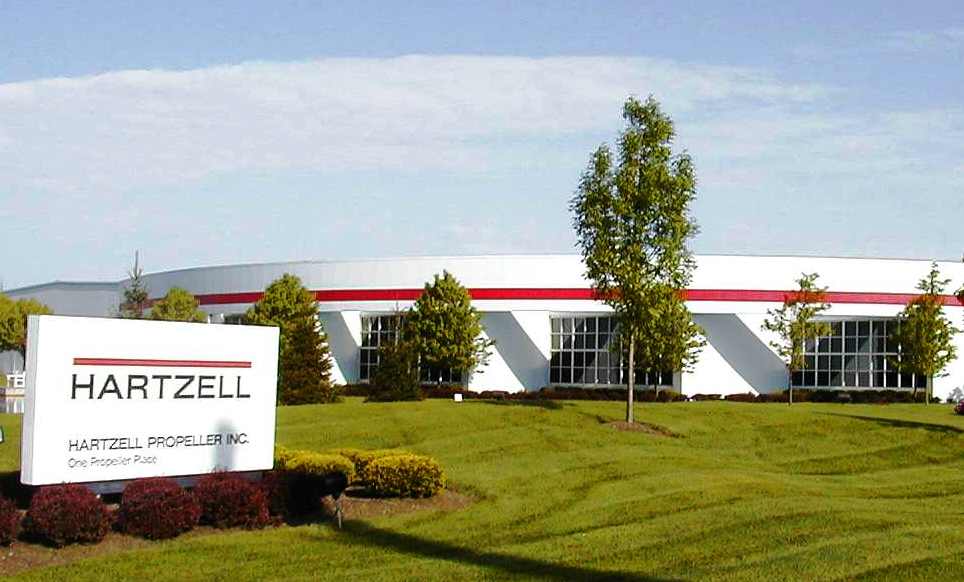
For those driving here are the directions according to Google Maps from KOSU:
If you have any questions please feel free to email This email address is being protected from spambots. You need JavaScript enabled to view it.This should be a good and interesting tour for all who attend!
Andrew Hale
President, EAA Chapter 9
Please note that there is now online sign-up available for YOung Eagles events. The URL is: https://www.flightsquid.com/event/2818 The online process allows parents to preregister their children, read and sign all the legalese, and then bring a printed copy of the release form with them to the event. This should be a great time saver for everyone.
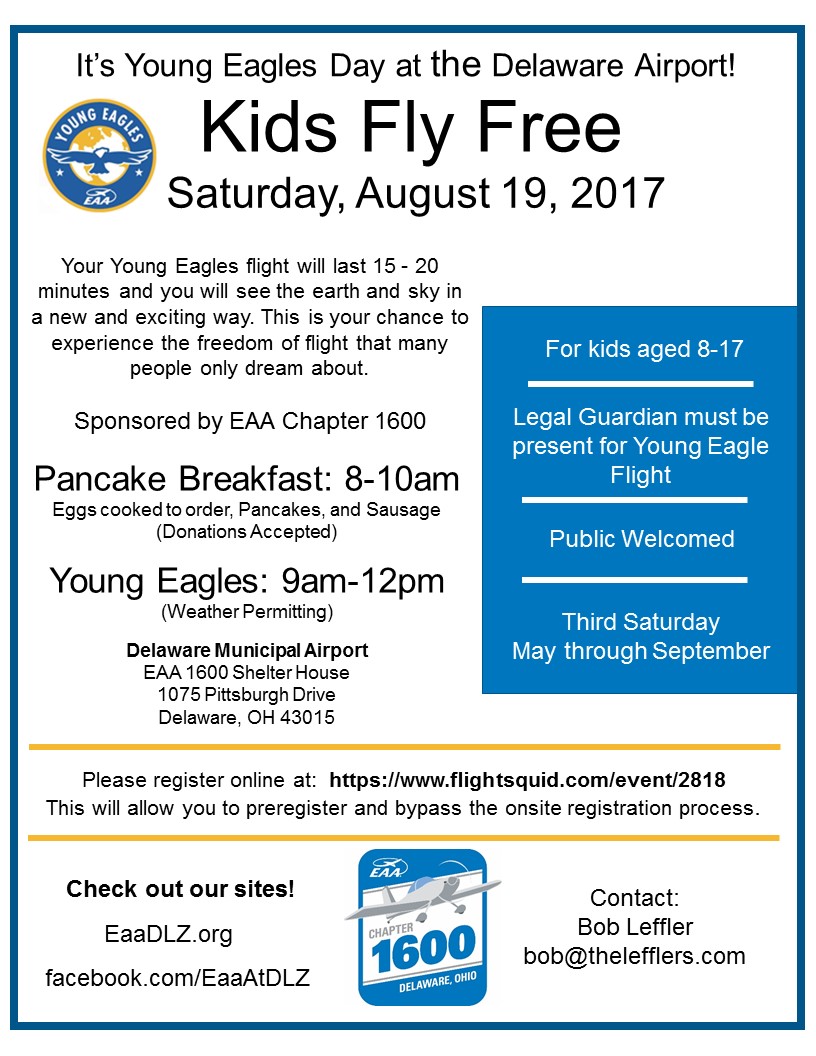
Several new events have been added to the calendar (Click the "Events" menu item above) and there is something of interest almost every weekend between now and October.
The "Red Stewart" Tail-dragger fly-in, and the "My Place fly-in in Cardington are particularly noteworthy. Both are "not to be missed" events.
Joe, Lynn and the other volunteers put on one of the best fly-ins anywhere. Be sure to fly in!
The fly-in is this Sunday, Aug 6th. I attended the flying in 2015 and it was one of the best of the year. Not only were the aircraft interesting (an F4G Corsair flew in to the 3,000' grass airfield) but the cars were way beyond anything we typically see at this type of event. MacLarens, Ferraris, Lamboghinis and more.
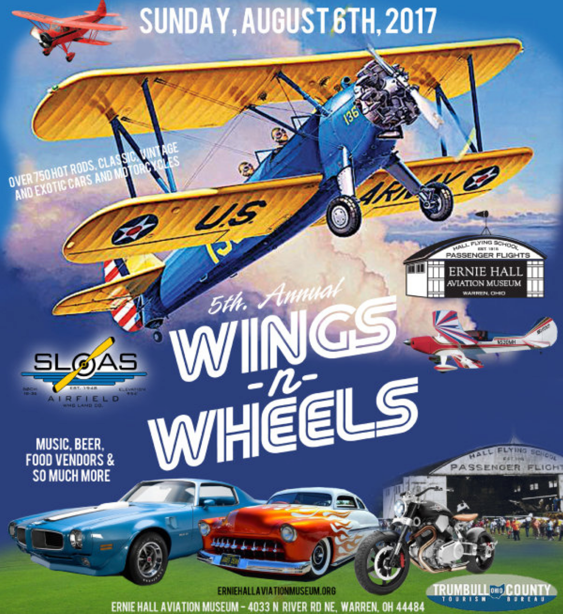
This Airplane is the LX7a It is basically a Lancair 4P pressure vessel with completely redesigned wings and tail, and a modified belly. They cruised at 277 Knots with three men, gear and over 200 gallons of usable fuel on board, flying lean of peak at 23,000 feet.
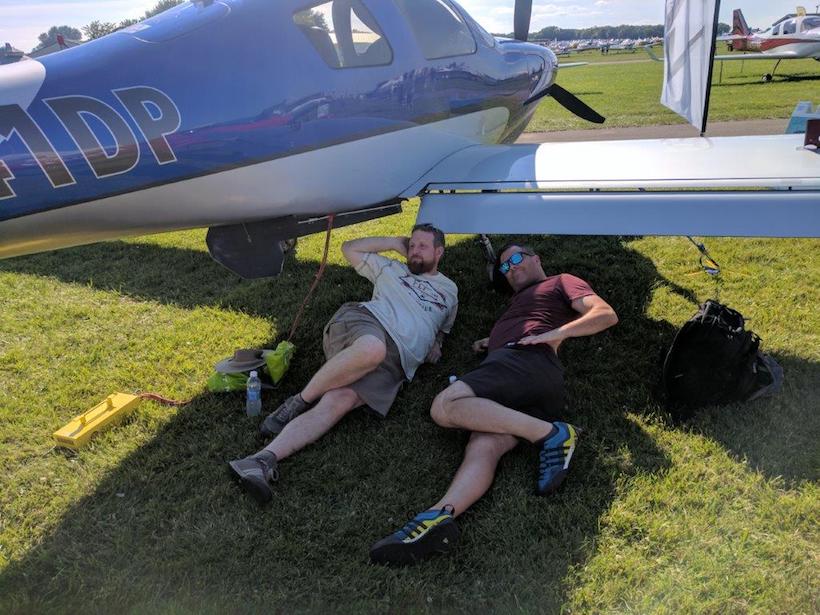
This is our friend Eric's design. His company was promoting their new Lancair 4P modification but didn't have any models to attract a crowd. We happily offered our services.
More information here: http://www.rddent.com/lx7.html (The plane, not the models)
Jason Seavolt shared the pictures of the DLZ crew (and others) at Oshkosh/AirVenture 2017. Makes you wish you were there right? The pictures have been added to the Pictures link at the top of this page - or you can click here.
Here are a few of the picture to whet your appetite :)
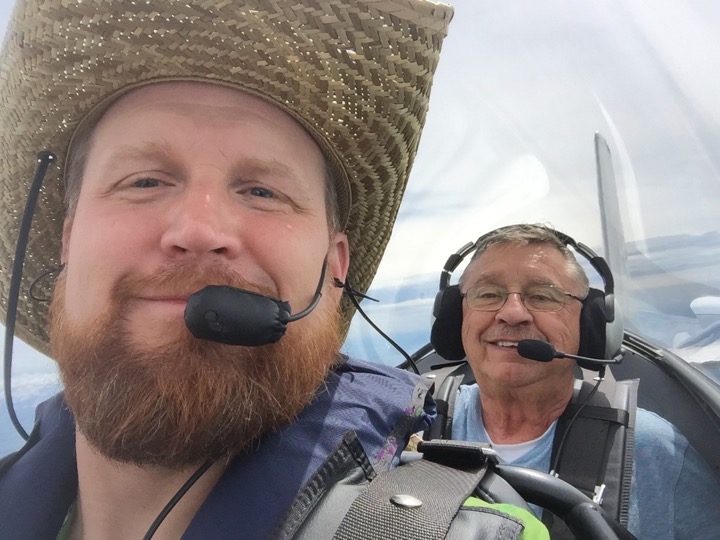


Page 2 of 3